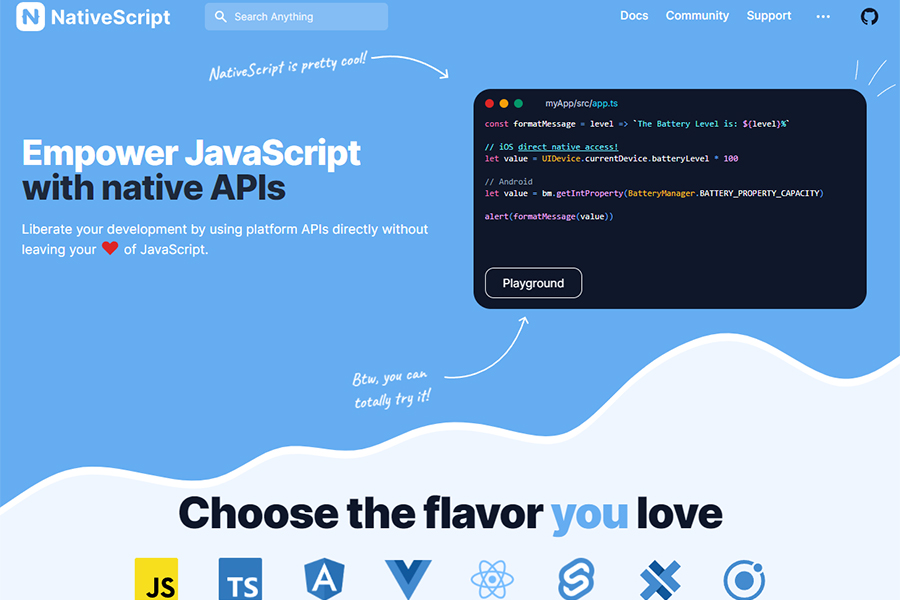NativeScript Pros and Cons
NativeScript is a JavaScript mobile app development framework that integrates with Vue.js, Angular, TypeScript, and other technologies to enable developers to build native apps for Android and iOS.
The framework is open source and has been around since 2014, preceding the now more popular development frameworks released by Facebook and Google. Explore with us now the pros and cons of using NativeScript to better understand its strengths and possible limitations.
NativeScript Pros and Cons – The Pros
- Now let’s take a closer look at what exactly NativeScript can offer developers.
- Flexible Development – NativeScript enables developers to write code in their JavaScript framework of choice, whether we are talking about Angular, Vue.js, or TypeScript. For developers used to cross-platform hybrid app development frameworks, making the switch to NativeScript can be liberating.
- Enable Content Splitting – With NativeScript, developers can split CSS styles and other custom content into separate files, which can simplify the process of building apps across different platforms.
- Smooth and Beautiful UI – User interfaces built with this framework can be successfully adapted to different devices with less effort and trouble than other hybrid app development.
- Accessible to Many Developers – It relies on well-known technologies like JavaScript, CSS, and TypeScript which many developers are familiar with. This gives the framework a flatter learning curve compared to other frameworks that may use framework-centered programming languages.
- Single Code Base Deployment – You can use the framework to code mobile apps for different platforms using a single code base, which simplifies both deployment and testing. You can also use existing code for web-based apps built with Vue.js or Angular.
- Full Access to iOS and Android APIs – In addition to plugins and templates, NativeScript offers full access to iOS and Android APIs. Developers can use these to build apps that look and feel like native ones without any major limitations.
NativeScript Pros and Cons – The Cons
- Documentation Problems – Some developers find the official NativeScript documentation too general and at times unhelpful. For experienced developers familiar with JavaScript and CSS this may not always be a problem, but developers who are just starting out may be slowed down a bit.
- Small Community – At the time of writing, NativeScript is being used by a relatively small percentage of developers—platforms like Angular or Flutter are backed by much larger and more active communities. The main problem with that is that support for NativeScript may not always be as easy to get.
- LiveSync Not As Useful as Hot Reload – NativeScript doesn’t have a convenient Hot Reload that developers can use for all projects and with all frameworks that they integrate. LiveSync isn’t a universal alternative.
- Native Android Only 90% — When developing cross-platform apps with this framework, Android apps will not look exactly like iOS apps. In some cases, this may give rise to consistency issues.
- Large App Installers – Apps built with NativeScript have a bigger installer than those built with other frameworks.
NativeScript Pros and Cons – Final Thoughts
NativeScript is a good choice for building simple mobile apps on Android and iOS that use mostly broad features that are common to both platforms. It’s also great for transitioning from a web app built in Vue.js or Angular to a native mobile app, thanks to single codebase sharing.
In many cases, it’s also an inspired choice if getting a native user interface is important for your project. But keep in mind that this framework has a smaller user base than frameworks backed by Facebook or Google, which could lead to support issues as well as potential problems for long term projects.
NativeScript Pros and Cons – Additional Resources
- NativeScript Official Website – Empower JavaScript with native APIs
- NativeScript Documentation
- NativeScript Best Practices
